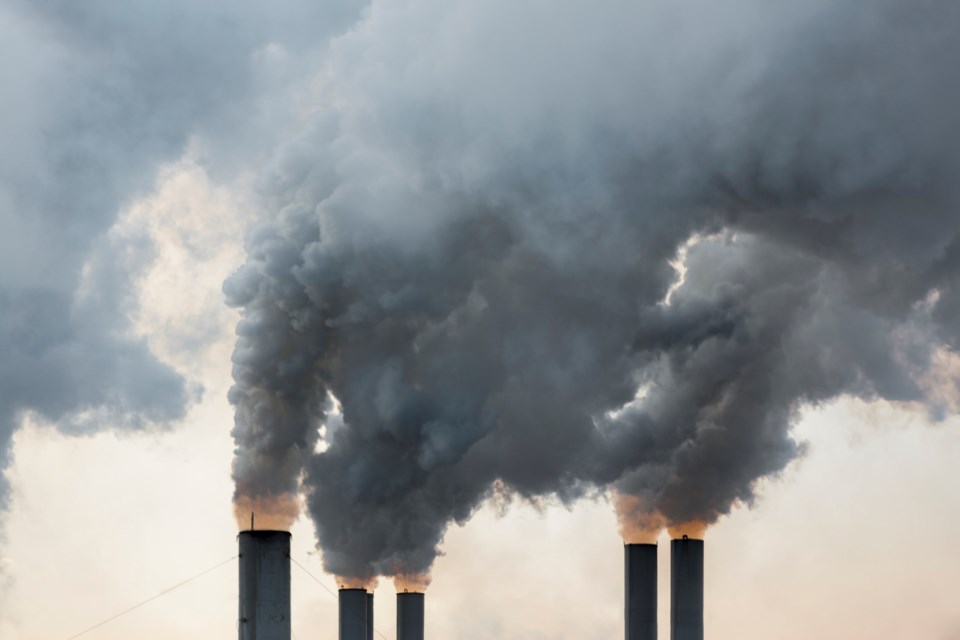The B.C. government says it will introduce an emissions cap on fossil fuel production in the province as a backstop should a federal cap fall short in the coming years.
In a release Thursday, the Ministry of Environment and Climate Change Strategy said the province is in discussions with the federal government to align their policies, and avoid regulatory duplication.
The B.C. government says it will introduce regulatory measures in 2025 so that the cap takes effect in 2026. If at any point, a federal emissions cap does not go far enough to meet B.C.’s reduction targets, the provincial cap will kick in.
Josie Osborne, Minister of Energy, Mines and Low Carbon Innovation, said by placing a cap on oil and gas emissions and not production, the measures would provide industry with “certainty” to allow it to decarbonize.
“While some want to see us shut down the entire industry and the good jobs that go with it, others want to rip up B.C.’s climate plan and abandon our pollution reduction targets,” Osborne said in a statement.
“We know there is a better way forward.”
To ensure compliance with the emissions cap, the government said it’s considering “absolute emission reductions; technology applications; verifiable trade-able carbon credits; verifiable carbon offsets; and compliance payments.”
B.C. cap comes as Canada forecast to accelerate emissions from new oil and gas
The heads of two green think tanks immediately came out in support of the new B.C. oil and gas emissions cap.
The Pembina Institute’s executive director Chris Severson-Baker urged the federal government to respond with its own oil and gas emissions cap, while Mark Zacharias, executive director of Clean Energy Canada, said he was “pleased” with the latest move.
“Our position is clear: New fossil fuel projects can only proceed if they fit within B.C.’s climate targets and the emissions cap is the best way to ensure that this happens,” Zacharias said in a statement.
Jens Wieting, senior policy and science advisor from the Sierra Club of BC, said he was “very concerned” about the announcement, especially coming just a day after the received environmental certificates.
Wieting said that if the B.C. and federal governments couldn’t deliver on a emissions cap “in a timely manner,” they should put a “temporary pause” on all new fossil fuel projects as U.S. President Joe Biden did for U.S. LNG projects.
The oil and gas sector is the largest and fastest growing source of emissions in Canada, accounting for 28 per cent of total national emissions in 2021 and growing by 88 per cent between 1990 and 2021.
Between 2023 and 2024, Canada is expected to be responsible for 10 per cent of all potential global carbon emissions from new oil and gas production, a report from Global Energy Monitor said Thursday.
Federal cap-and-trade system still in planning stages
In December 2023, the Canadian government unveiled its regulatory framework for a on the oil and gas sector under a cap-and-trade system.
The federal government had originally proposed up to a 42 per cent reduction of oil and gas sector emissions below 2019 levels by 2030. The latest plan calls for the fossil fuel industry to eliminate a 35 to 38 per cent of their emissions by 2030 or offset their emissions through the purchase of credits.
The emissions cap will cover facilities operating in oil sands, conventional oil production, natural gas production and processing, and liquefied natural gas production.
Under a cap-and-trade system, federal regulators will limit overall emissions while issuing emissions allowances to fossil fuel facilities.
Facilities will be able to buy and sell emissions allowances on an emissions trading market, but there will be total upper limits on how much carbon pollution can be released.
Each emissions allowance will be worth the equivalent of one tonne of carbon dioxide, though the system also covers methane and nitrous oxide.
The goal, says the federal government, is to drop the upper limits on emissions over time so they decline to net-zero by 2050. The plan is expected to be in place in 2026 or later.
Industry opposes emissions cap, environmentalists say it doesn't go far enough
Aside from still being in the planning stage, the cap-and-trade system has faced some criticism.
When details of the plan were revealed in December, lawyers with West Coast Environmental Law said “compliance flexibility” in the framework meant the actual legal cap is to reduce emissions 20 to 23 per cent below 2019 levels.
“This crucial framework has been a long time coming, but we’re disturbed that pressure to put corporate profits ahead of the safety of our communities and planet has resulted in loopholes and a lack of urgency,” Andrew Gage, a staff lawyer with the firm, said at the time.
Industry has accelerated its opposition to the emissions cap in recent months. On Wednesday, the Calgary Chamber of Commerce sent a letter to the federal government urging it to reconsider the cap as it could compromise the valuation and sale of the Trans Mountain pipeline.
“If there is a risk that (Trans Mountain) might not be able to rely on a steady and predictable flow of oil from the oil sands production, it will result in a lower valuation by investors and a lower price received when the asset is sold," states the letter, which was signed by Calgary Chamber of Commerce president Deborah Yedlin as well as a number of other Alberta-based business groups and oil-and-gas sector leaders.
On Wednesday the Calgary Chamber said “the emissions cap would create uncertainty, unfavourable economic conditions and a punitive regulatory environment.”
With files from Canadian Press




